US-VN History
“First Thắng, Second Chinh, Third Thanh, Fourth Trưởng”: The Four “Incorruptible” Generals of the ARVN
Published on
By
Lam Vinh The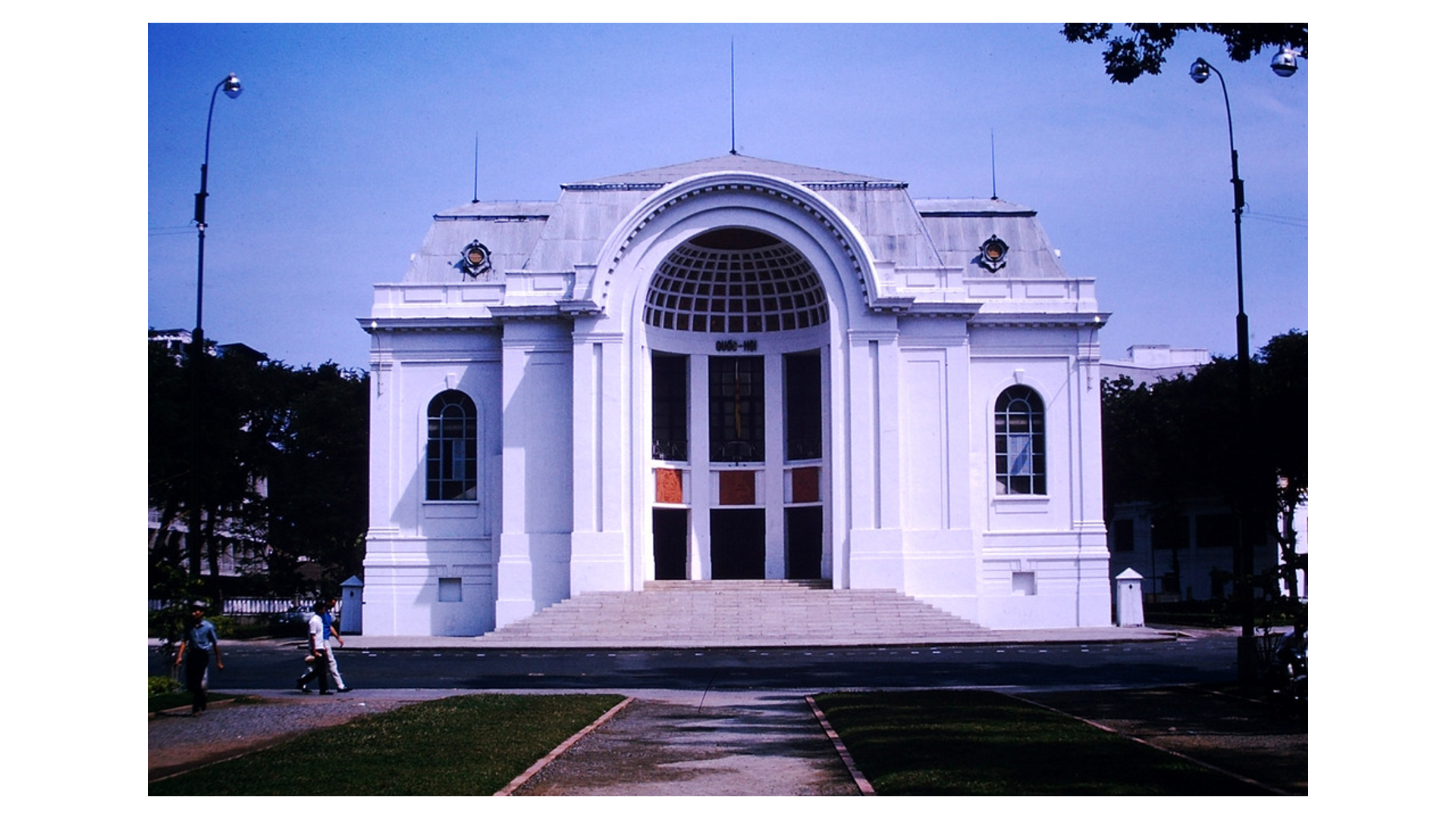
Editor’s Note: This piece provides historical and contextual information about four of the most well-regarded generals of the ARVN: Nguyễn Ðức Thắng(1930- 2020), Phan Trọng Chinh(1930-2014), Nguyễn Viết Thanh (1931-1970), and Ngô Quang Trưởng (1929-2007). All translations have been provided by the author. Opinions expressed in this articles are solely those of the author and do not reflect the US-Vietnam Review. This version has been edited for style and readability.
During the 1970s, in South Vietnam, there was a popular saying: “Nhứt Thắng, Nhì Chinh, Tam Thanh, Tứ Trưởng (“First Thắng, Second Chinh, Third Thanh, Fourth Trưởng”), signaling the admiration of people toward these four incorruptible generals of the ARVN, in a country where the corruption was commonplace among political and military leaders.
First Thắng: Lieutenant-General Nguyễn Đức Thắng (1930-2020)
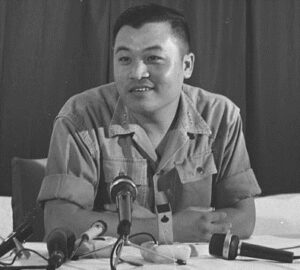
Lieutenant-General Nguyễn Đức Thắng
He was Born on January 1930 in the Province of Cao Bằng, North Vietnam, he began attending Class I of the Nam Định Reserve Officer Training School on October 1, 1951. However, after two weeks, he was transferred to the Thủ Đức Reserve Officer Training School, and graduated on June 11, 1952 as a Second-Lieutenant in Artillery.
He moved up the ranks in the Army as follows:[1]
- First-Lieutenant in February 1953
- Captain in October 1954
- Major in 1955
- Lieutenant-Colonel in 1958
- Colonel in February 1961
- Brigadier-General on August 11, 1964
- Major-General on November 1, 1965
- Lieutenant-General on June 3, 1968
General Thắng was made Commander of a number of big units of the ARVN as follows:
- 1st Infantry Division: from January 1, 1961 to October 15, 1961
- 5th Infantry Division: from October 16, 1961 to December 19, 1962
- IV Corps: from February 29, 1968 to July 1, 1968
He was also a cabinet member of the two following successive governments:
- Nguyễn Cao Kỳ government: Commissioner for Rural Development from October 1, 1965 to November 8, 1967
- Nguyễn Văn Lộc government: Minister of Rural Development from November 9, 1967 to February 23, 1968
Among the South Vietnamese populace, there have been numerous stories and anecdotes circulating for years regarding his integrity, incorruptibility, his affection for the soldiers, and his care for the people, as outlined below:
“Có lần tướng Thắng đã cầm đầu một phái đoàn đi tham quan ngoại quốc. Trên nguyên tắc, tùy thời hạn, mỗi sĩ quan trong phái đoàn đều được đổi mỗi người một ít ngoại tệ để tiêu xài và chánh phủ cho riêng một ít tiền túi. Còn ông tướng trưởng phái đoàn thì có thêm một ngân khoản gọi là “ngân sách tiếp tân.” Khi ra nước ngoài, tướng Thắng đã không xử dụng số tiền tiếp tân của chánh phủ cấp phát. Lúc về nước, ông đã đem trả đủ số tiền không chi tiêu ấy vào ngân sách cho chánh phủ… Vốn là một sĩ quan to con, khỏe mạnh, hiếu động, tướng Thắng thích tự thân xông pha với các chiến sĩ của ông trong những cuộc hành quân bình định đại qui mô. Những dịp này, nếu có đồng bào hay thường dân từ trong những vùng quê xa xôi, hẻo lánh, mất an ninh, bồng bế, dắt díu nhau đi ra, tướng Thắng thường làm gương cho binh sĩ là đi bộ, nhường xe vận tải chở thường dân, nhất là đàn bà và trẻ thơ… Hôm ấy là dịp tướng Thắng, tư lệnh vùng, đi thị sát lãnh thổ trách nhiệm và hội họp bộ tham mưu tại tiểu khu Rạch Giá. Như thế, tất nhiên vị tiểu khu trưởng kiêm tỉnh trưởng địa phương, theo lệ thường, phải khoản đãi quan khách một bữa ăn thịnh soạn. Bữa ăn đó thường diễn ra trong tỉnh đường và do công quỹ đài thọ. Nhưng tướng Thắng đã không dự tiệc, mà lại ra ngồi ngoài xe Jeep, gân cổ lên “quạp” ổ bánh mì thịt to tổ nái.” [2]
(Translation:
“Once he was head of a government delegation visiting a foreign country. In principle, based on the length of the visit, each officer was given some travel allowance as well as allowed to have some foreign currency for their own expenses. For the general head of the delegation, some special fund was provided for him to cover his own expenses for “public relations.” During the visit, General Thắng did not spend this fund. After the trip, he gave back all the money to the Government’s Treasury… Being himself an officer with a large body, very strong, and dynamic, he was always personally actively involved with his soldiers in those large pacification operations. During these times, if there were civilian people moving out with their children from those isolated and insecure areas, he always made examples for his soldiers by walking with them, never used his own Jeep, and ordered them to let the trucks transport the people, especially women and children… On that day, General Thắng, as Corps Commander, was making an inspection tour of the area under his responsibility, and had a staff meeting at the sub-section of Rạch Giá. As usual, the sub- section chief / province chief, of course, had to provide a good and copious lunch. The meal was served in the administrative headquarter of the province, and paid for by the provincial budget. But General Thắng did not participate in the lunch. Instead, he went out to his Jeep and savored a big submarine sandwich he brought from his home.”)
The Americans were also informed of his reputation as a clean, honest, incorruptible, serious, hard-working general. They held respect and admiration for him. This is why both military and civilian American personnel have strongly supported him. An American author noted:
“Thang had a reputation for honesty and hard work, which won him not only the respect of his American civilian and military advisors but also substantial American support for his revolutionary development campaign.” [3]
The U.S. Central Intelligence Agency (CIA), in its numerous weekly reports on the Situation in South Vietnam, also had good remarks on his personality, behavior, and working method as well as on his thoughts regarding the rural development.
The CIA weekly report dated 24 October 1966, in Part II, Revolutionary Development (i.e., rural development) made the following remark:
“He was particularly critical of the “new life hamlet program” which was designed to provide security from Viet Cong incursions and to provide a “new life” to the peasant. Thang maintains that the latter goal of the program has not been successfully achieved and in his words, “has not provided a new life for the people in the hamlets.” There has been no true social revolution, he asserted and “the Communists… have not been wiped out.” Thang implied that government interference in the life of the peasants must be minimal and that hamlet residents should control their own programs. The Revolutionary Development Cadres, which he claims have started to take hold in the provinces, should act mainly as an “emotional bridge” between the peasant and the government, according to Thang.” [4]
Due to his reputation for honesty and integrity, his straightforward and diligent approach, as well as his favorable stance on rural development, and the significant support from the Americans, General Thắng has undoubtedly faced suspicion and jealousy from other South Vietnamese generals. As a result, he has at times contemplated resigning. A CIA weekly report made the following observation:
“There is some indication that Minister of Revolutionary Development General Nguyen Duc Thang may be thinking of resigning his post because of criticism from other members of the Directorate… Part of the difficulty in Thang’s relationship with other members of the Directorate may stem from the fact that he has received a great deal of support and praise from American advisers, which has probably generated envy and suspicion.” [5]
In early 1968, he handed over the Ministry of Rural Development to Lieutenant-General Nguyễn Bảo Trị. On February 29, 1968, he assumed command of the IV Corps, taking the place of Major-General Nguyễn Văn Mạnh. President Nguyễn Văn Thiệu, who had a strained relationship with him ever since General Thắng, representing other generals supporting Major-General Nguyễn Cao Kỳ, declined to pursue his candidacy in the 1967 presidential election,[6] faced considerable pressure from the Americans. Reluctantly, he eventually appointed General Thắng, known for his integrity, to replace General Mạnh, who had a reputation for corruption. General Thắng’s tenure in command was brief, as he handed over control of the IV Corps to Major-General Nguyễn Viết Thanh on July 1st, 1968. He briefly served as the commander of the Artillery Service of the ARVN before being appointed as Assistant for Planning for General Cao Văn Viên, the Chief of Staff, a role with limited authority. In 1973, he requested an unpaid leave to pursue further education, and by the end of the year, he was released from the Army. In late April 1975, he was recalled but was not assigned any specific position within the Army when the Republic of Vietnam collapsed on April 30th, 1975. Following this event, he resided in Connecticut, USA. He passed away in 2020 at the age of 90.
Second Chinh
The second on the list was Lieutenant-General Phan Trọng Chinh (1930-2014).
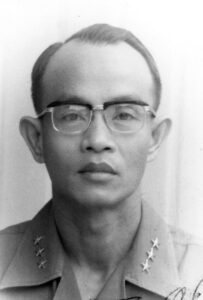
Lieutenant-General Phan Trọng Chinh
General Chinh was born on February 1, 1931 in the Province of Bắc Ninh, North Vietnam. He attended Class No. 5 of the Đà Lạt Inter-Arm Military Academy, and graduated on April 24, 1952 as a Second-Lieutenant.
He moved up the ranks of the Army as follows:[7]
- First-Lieutenant in January 1954
- Captain on September 29, 1954
- Major in September 1956
- Lieutenant-Colonel in December 1963
- Colonel on March 6, 1965
- Brigadier-General in 1966
- Major-General in 1968
- Lieutenant-General in 1973
From 1954 to 1956, he served as the inaugural Commander of the 3rd Airborne Battalion. By the end of November 1956, he had been promoted to Major and assumed the role of Chief of Staff of the Airborne Brigade. On October 26, 1960, he transitioned to command the Rangers. Subsequently, on November 11, 1960, he took part in the military coup led by Colonel Nguyễn Chánh Thi, then the Commander of the Airborne Brigade. The coup, unfortunately, failed, leading to his arrest, trial by the Saigon Military Tribunal, and an 18-year sentence of labor work in Côn Đảo Prison.
Following the successful coup on November 1, 1963, which saw the overthrow of the Ngô Đình Diệm Government, he was liberated by the Military Revolutionary Council. His sentence was nullified, and he was elevated to the rank of Lieutenant-Colonel, subsequently appointed Chief of the Province of Pleiku. On March 6, 1965, he was promoted to Colonel while assuming the role of Commander of the 25th Infantry Division.
It was during his tenure as Commander of the 25th Infantry Division that he displayed notable virtues: incorruptibility, refraining from abusing his authority for personal or familial gain, complete dedication to his duties, and genuine care for his soldiers, sharing all perils with them. Below are anecdotes detailing these virtues, stories that have circulated among the South Vietnamese populace:
“Trong suốt mấy năm liền đảm nhiệm trọng trách đó, tôi thấy tướng Chinh không mấy khi về Sài Gòn thăm gia đình vợ con và bạn bè. Ông bận lo thị sát chiến trường, thanh tra các địa phương. Một đặc điểm đáng nêu lên đây là tướng Chinh đi thanh sát toàn bằng xe, di chuyển trên đường bộ, mặc dù vùng ông trấn đóng rất nguy hiểm. Bọn CS địa phương thường hay đặt mìn, bắn sẻ và phục kích từng toán lẻ tẻ. Thỉnh thoảng về thăm gia đình, vợ con, ông cũng dùng xe chớ không bao giờ dùng trực thăng như đa số các vị tướng lãnh khác. Đoàn xe của tướng Chinh di chuyển thường chỉ gồm có một chiếc Dodge 4×4 trí súng đại liên với mấy tay xạ thủ, một jeep ông ngồi cùng với tài xế và đại úy Đoàn, sĩ quan tùy viên của ông.” [8]
(Translation:
“Throughout those successive years when he had that great responsibility, I rarely saw him go to Saigon to visit his family or his friends. He kept himself busy all the times making tours at the outposts of his troops, or inspecting different areas under his division’s responsibility. It’s really noteworthy that General Chinh made these trips always by cars, on the roads although the area under his responsibility was extremely dangerous. The local VC always laid mines, sniped, and ambushed small groups of ARVN. Occasionally when he went home to see his family, he also used cars and never used helicopter like the majority of other generals. His personal convoy usually consisted of a 4 x 4 Dodge equipped with machine guns and gunners, and his own Jeep with himself sitting in the front seat with the driver, and with Captain Đoàn, his orderly officer, siting in the back.”)
“Khoảng năm 1966-67, đường Saigon – Đức Hòa còn là đường đất bụi. Hôm đó, tôi trên xe cứu thương, trương cờ Hồng Thập Tự mà chạy. Xe tôi đi sau một đoàn xe của quân đội, tôi bóp kèn, thì tất cả đều dạt vào trong. Nhưng đến xe đầu tiên thì tôi biết là xe của ông Tướng (vì có gắn ngôi sao), xe tôi không dám vượt qua. Nhưng tôi thấy Tướng Chinh vỗ vai người tài xế, và xe ông dạt vào trong cho xe tôi chạy. Đến tối, tôi xin gặp Trung Tướng và xin lỗi. Nhưng Tướng Chinh nói: “NGÔI SAO CỦA TÔI KHÔNG THỂ BẰNG SINH MẠNG CỦA MỘT THƯƠNG BINH”. Câu nói đó đã chạm vào tim tôi, nước mắt tự rơi không kềm được. Một câu nói thật ngắn, gọn, nhưng sao hay trong văn chương, đẹp trong tình người đến như vậy.” [9]
(Translation:
“Around 1966-67, the road between Saigon and Đức Hòa was still a dirt one. On that particular day, I was in the ambulance rushing with a Red Cross flag on it. We were behind a military convoy. We blew the horn and every truck of the convoy yielded the way for the ambulance. When we reached to the first vehicle of the convoy, I knew right away that it was the general’s jeep (because of the star on the plate). We dared not pass it. But right at that moment I saw the general pat the driver’s shoulder, and the jeep yielded the way for the ambulance too. In the evening, I came, asked to see the general and apologized to him. But General Chinh said: “MY STAR IS NOTHING COMPARED TO THE LIFE OF A WOUNDED SOLDIER.” I was deeply moved by his statement and the tears came down uncontrollably. A short statement but so eloquent, beautiful, and full of compassion.”)
Due to his directness, General Chinh found himself in occasional confrontations with several U.S. advisors, some of whom expressed disdain or, at times, even insulted the ARVN. These unpleasant incidents led to a strained relationship with the Americans, resulting in less favorable evaluations of him in their reports. The following is a skewed comment about General Chinh found in a CIA report:
“The controversial commander of the ARVN 25th Division, General Phan Trong Chinh has stepped-up the tempo of hamlet construction to one month, and consolidation phases to one and one-half months. Chinh’s order has been issued in an apparent attempt to make the pacification effort in his area look good.” [10]
Certainly, remarks of this nature about General Chinh from the Americans undoubtedly influenced the GVN leadership. The following is a clear indication of President Nguyễn Văn Thiệu’s decision to refrain from appointing him as Commander of II Corps in April 1972:
“MR 2 commander Gen. Ngo Dzu simply panicked and fled from Corps headquarters at Pleiku to coastal Nha Trang, leaving the de facto leadership of ARVN forces in the interior to MR 2 senior adviser John Paul Vann… Thieu was considering replacing him with a known incompetent named Phan Trong Chinh. Acting on an ostensibly spontaneous impulse, Bunker sent Thieu a list of candidates on which Chinh’s name did not appear. Thieu picked one that did, that of Gen. Nguyen Van Toan.” [11]
After he left the 25th Infantry Division, General Chinh was appointed to the following successive positions:
- Vice-Commander of III Corps, 1968
- Commander of the General Directorate of Military Instruction, 1969-1973
- Commander of the Command and Staff School, 1974-1975
After April 30, 1975, he resided in Rockville, Maryland, USA. He passed away on November 17, 2014, in Vienna, Virginia, USA, at the age of 85. His funeral was solemnly commemorated with all the honors befitting a general of the ARVN.
Third Thanh
The third general on the list is Major-General Nguyễn Viết Thanh (1931-1970).
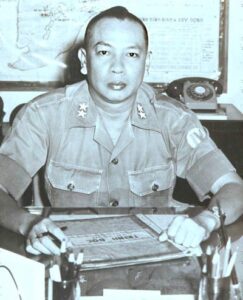
Major-General Nguyễn Viết Thanh
General Thanh was born on March 31, 1931 in Tân An, Province of Long An. He attended Class 4 of the Đà Lạt Inter-Arm Military Academy, and graduated on December 1, 1951 as a Second-Lieutenant. He moved up the ranks of the Army as follows:[12]
- First-Lieutenant in December 1953
- Captain in 1955
- Major on October 26,1959
- Lieutenant-Colonel in 1964
- Colonel on October 9, 1965
- Colonel in December 1965
- Brigadier-General on June 19, 1966
- Major-General June 19, 1968
He was made commander of the following combat units:
- Platoon 12, Company 51, Vietnamese 15th Battalion, in December 1951
- Company 51, 15th Battalion, end of 1952
- Local Battalion 707 in 1953
- Regiment 12, 7th Infantry Division in 1962
- 7th Infantry Division October 9, 1965
- IV Corps on July 1, 1968
Within the ARVN, he had the reputation of an exemplary, clean, incorruptible officer with many anecdotal stories, as reflected in the following passage:
“Vào giữa năm 1968, Thiếu Tướng Nguyễn Viết Thanh được bổ nhiệm làm Tư Lệnh Quân Đoàn IV, Quân Khu IV. Lúc đó tôi làm Tổng Thư Ký Hội Đồng Tái Thiết Phát Triển kiêm Trung Tâm Trưởng Trung Tâm Điều Hợp Tỉnh Kiên Giang. Hàng tháng tôi thường về họp tại Trung Tâm Điều Hợp Quân Khu do Đại Tá Phạm Văn Út làm Trung Tâm Trưởng và thỉnh thoảng có ghé qua thăm Thiếu Tướng Thanh. Nhân một buổi họp cuối năm, tôi có chở theo vài món đặc sản Rạch Giá như nước mắm nhĩ Phú Quốc, khô cá thiều và một ít bánh ú lá dừa biếu gia đình ông. Vì biết tôi có quà cho Tướng Thanh nên Trung Tá Tỉnh Trưởng Kiên Giang cũng nhờ tôi chở theo một số quà biếu Tư Lệnh. Ông nghe tiếng Thiếu Tướng Thanh rất thanh liêm, không ưa vụ biếu xén quà cáp, nên ông không dám đích thân đi biếu mà nhờ tôi là chỗ thày trò cũ, may ra được nhận chăng? Hôm đó sau buổi họp ở văn phòng Đại Tá Út, tôi qua thăm Tư Lệnh. Thiếu Tướng Thanh niềm nở tiếp tôi, hỏi thăm chuyện vợ con, hỏi thăm Thiếu Tướng Khuyên, rồi ông nói: “Bây giờ cũng trưa rồi, Quý qua bên nhà ăn cơm với vợ chồng tôi nhé, ăn chay đó.” Tôi thưa: “Cám ơn Thiếu Tướng, hôm nay đàn em không xin được trực thăng, phải đi đường bộ, về trễ sợ nguy hiểm, lần sau sẽ xin ghé tư dinh thăm chị luôn.” Tôi tranh thủ trình bày vụ biếu quà, ông bảo: “Thôi được, món nào của anh thì tôi nhận, nhưng chỉ lần này thôi nhé. Còn của anh Tỉnh Trưởng thì anh đem về nói là tôi rất cám ơn, nên đem mấy món quà đó tặng cho anh em thương bệnh binh nhân dịp Tết cho họ mừng. Đó là điều mà cấp chỉ huy nên làm.” Bất giác tôi chợt nhớ đến cái Tết 10 năm trước ở Vĩnh Bình. Sáng mồng một Tết, ông cùng Thiếu Tá Khuyên vào bệnh viện tỉnh thăm thương bệnh binh. Rồi suốt ngày mồng hai Tết, ông hết đứng lại ngồi đăm chiêu trước bản đồ hành quân để nghiên cứu địa hình và tình hình địch. Hình như ông nóng lòng trông cho mau đến ngày mồng 3, hết hạn hưu chiến để tổ chức hành quân Bình Định. Cuộc đời của ông chỉ biết phục vụ, phục vụ và phục vụ, chí công vô tư, xả thân vì nước.” [13]
(Translation:
“In mid-1968, Major-General Nguyễn Viết Thanh was appointed Commander of IV Corps. At that time, I was Secretary-General of the Reconstruction Council and Head of the Coordination Center of the Province of Kiên Giang. I had monthly meetings at the Corps Coordination Center with the Head of the Center, Colonel Pham Văn Út, and, occasionally, I came to see Major-General Thanh. On the occasion of one year-end meeting, I brought some special products of Rạch Giá, such as Phú Quốc fish sauce, giant catfish dried fish, coconut leaf-wrapped pyramidal plain rice cakes for his family. Because he knew that I would bring something as a gift for General Thanh, the Lieutenant-Colonel Province Chief of Rạch Giá asked me to also bring something for the General. He had heard of General Thanh’s incorruptibility, his dislike of subordinates’ offering of gifts. He dared not to present his offerings himself, and thought that maybe if his offerings were presented by me, General Thanh could accept them out of his teacher-student relationship with me. On that day, after my meeting with Colonel Út in his office, I went to see The Commander. General Thanh received me very warmly, asking me about my family, requesting me to convey his health wishes to Major-General Khuyên, and then said: “It’s now almost noon, Quý, come to my home and have a vegetarian lunch with me and my wife.” I answered him: “My General, thank you so much, but I can’t. Today I can’t get a helicopter lift back home, I will have to go back by road. I’m afraid that it will be a bit late and dangerous. Next time I will come to your home and see your wife too.” I immediately presented the gifts to him, and General Thanh said: “All right! I accept what you’ve brought for my family, and this time only, there won’t be a next time, OK? Now, for those things from the Province Chief, bring them back to him, tell him I thank him very much, but he should donate them to the wounded soldiers as Tết holiday gifts, they will be very happy. That is something a commander should be doing.” Suddenly, memories of Tết 10 years ago in Vĩnh Bình flashed back. I remember that on the morning of the First Day of Tết, together with Major Khuyên, he came to the hospital to visit the wounded soldiers. And then he spent all day of the Second Day of Tết, sometimes sitting at his desk, sometimes standing facing and thinking deeply in front of the operational map, studying the area on the map and the enemy situation. It looked like he was wishing that the Third Day of Tết would pass quickly, the truce would be over so that he could begin his pacification operation. All his life the only thing he had in mind was to serve, to serve, and to serve, honestly, and being ready to sacrifice for the country.”)
In addition to his reputation for integrity and incorruptibility, similar to Generals Thắng and Chinh, General Thanh also earned acclaim for his close connection and compassionate care for the people during his tenures as Province Chief of Long An (1961) and Gò Công (1963). This reputation led to an extraordinary account shared by an American, Major-General George S. Eckhardt, Senior IV Corps advisor:
“Gen. Thanh’s senior IV Corps adviser in 1968 and 1969, Major General George S. Eckhardt, recounted another tale of Thanh’s popularity. On one occasion the two generals flew to My Tho, Thanh’s former divisional headquarters, in search of a quiet lunch. But when word of their arrival got out, townspeople crowded into the restaurant to welcome their former commander. For forty-five minutes Gen. Thanh bowed and shook hands with the stream of well-wishers; most South Vietnamese senior officers never fraternized with their peasant soldiers or with the rural population.” [14]
In addition to the aforementioned virtues, General Thanh was also deeply respected by the soldiers under his command for his almost legendary bravery in battles. He stood out as one of the few ARVN generals to be awarded the highly prestigious Silver Star as a Corps Commander, as indicated in the following citation:
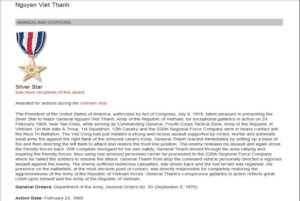
Citation presented at the same time with the Silver Star Medal awarded to Major-General Nguyễn Viết Thanh, Commander of IV Corps for his exceptionally brave action on February 24, 1969 in Tân Châu
On May 2, 1970, at 1:40 pm, while inspecting the battle front along Vietnam-Cambodia border, he was killed when his helicopter collided with a Cobra helicopter. He was promoted posthumously to Lieutenant-General and awarded the Second-Class Bảo Quốc Huân Chương (National Order Medal).
Fourth Trưởng
The general listed as Number 4 is Lieutenant-General Ngô Quang Trưởng (1929-2007).
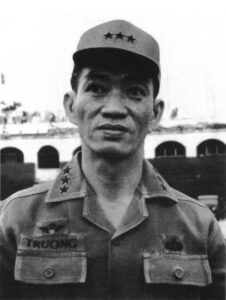
Lieutenant-General Ngô Quang Trưởng
He was born on December 13, 1929, in the Province of Bến Tre (later renamed Kiến Hòa). General Thanh attended Class 4 of the Thủ Đức Reserve Officer Training School and graduated on June 1, 1954, as a Second-Lieutenant. He volunteered to join the Airborne as a Platoon Commander of the 5th Airborne Battalion.
He moved up the ranks in the Army as follows:[15]
- First-Lieutenant on December 1, 1955
- Captain in 1961
- Major in 1964
- Lieutenant-Colonel in April 1965
- Colonel on June 19, 1966
- Brigadier-General on February 4, 1967
- Major-General on June 3, 1968
- Lieutenant-General on November 1, 1971
He was well-known as a general who was exemplary in military discipline, extremely dedicated to his duties, and always present at hot points within his area of responsibility, as presented in the following descriptive passage:
“Tư-Lệnh Quân-Ðoàn I & Quân-Khu I Ngô Quang Trưởng được hầu hết mọi người khâm-phục. Ông đã dành nhiều tâm-trí, công-sức, và thì-giờ vào các cuộc hành-quân hơn là vào công việc văn-phòng. Ông thường-xuyên mặc chiến-phục, đội mũ sắt, mang áo giáp, bay đến tận từng đồn + chốt khắp Quân-Khu, để quan-sát, nghiên-cứu tình-hình tại chỗ, và kiểm-tra tác-phong, kỷ-luật của các cấp quân-nhân. Bản-thân ông ít thích truy-hoan, nên cấm sĩ-quan thuộc quyền đến khiêu-vũ ở các nhà hàng ca + vũ + nhạc, khiến các Tỉnh-Trưởng và Thị-trưởng cấm luôn cả các phòng trà ca-nhạc tổ chức khiêu-vũ cho bất cứ giới khách hàng nào.” [16]
(Translation:
“General Ngô Quang Trưởng, Commander of I Corps & Region 1, was respected and admired by almost everyone. He reserved more of his time, his energy and his thoughts for military operations than for the paper work in his office. Always in combat fatigue, wearing a helmet and an anti-bullet vest, he flew to every outpost all over I Corps in order to be able to study the conditions and the situations on the spot, and to inspect behavior and discipline of his men. He himself did not like to spend time at bars and clubs, and, thus, he forbade his subordinates to come to dancing, bars and clubs. The province chiefs, therefore, also forbade clubs to organize dancing to even civilian clients.”)
He also had the reputation of a clean, incorruptible general, who did not tolerate his subordinates to do bad things or to steal from the people, as illustrated in the following anecdote:
“Trong giữa năm 1974, Ông đã có một hành động rất ngoạn mục. Lính của một sư đoàn tại vùng I đã lùa một đàn bò của dân chúng, đem cất giấu tại thung lũng Quế Sơn. Khi nghe dân chúng tố cáo, ông đích thân bay đi tìm và đem trao trả cho khổ chủ. Số bò còn thiếu, ông trừ lương từ Trung Ðoàn Trưởng đến binh sĩ, lấy tiền mua bò trả đủ số cho dân, không dung dưỡng bao che các việc làm mờ ám của thuộc cấp, như một số các vị chỉ huy khác.” [17]
(Translation:
“In mid-1974, he had a very spectacular action. The soldiers of one division of I Corps had stolen a herd of cows, and hidden them in the valley of Quế Sơn. When he heard of the accusation by the people, he personally flew over the area and searched for the cows, retrieved and returned them to the owner. He also ordered to deduct money from the salaries of the responsible people, from the regiment commander down to the soldiers, and used such money to buy cows to replace the missing ones. The whole incident showed very clearly that he did not tolerate or cover for his subordinates in their wrongdoings like other commanders.”)
He was also among a very small number of generals who did not harbor any political ambitions and were never involved in political conspiracies or events. General Trưởng dedicated all his time to military duties. Like General Thanh, General Trưởng was one of the few ARVN generals who commanded combat units from the lowest to the highest levels.
- Commander of platoon: July 1954 (a platoon of the 5th Airborne Battalion)
- Commander of company: beginning of 1955 (1st Company, 5th Airborne Battalion)
- Commander of battalion: in 1961 (5th Airborne Battalion)
- Commander of Division: in 1966 (1st Infantry Division)
- Commander of corps: in 1972 (IV Corps and I Corps)
He had participated in numerous significant battles while serving in the Airborne, but he was most renowned for his role in the Battle of Hắc Dịch in February 1965. At that time, he was a Major and the Commander of the 5th Airborne Battalion.
Hắc Dịch was a clandestine zone of the 7th Viet Cong Division situated in the dense forest north of Ông Trịnh Mountain, in the Province of Phước Tuy (formerly known as Bà Rịa). This operation, targeting the Hắc Dịch clandestine zone, was organized by the II Corps with the objective of eliminating the communist forces that had inflicted heavy losses on the 4th Marines Battalion in the Battle of Bình Giả (near the Hắc Dịch zone) at the end of 1964 and the beginning of 1965. It was codenamed Operation Nguyễn Văn Nho, named after the Commander of the 4th Marines Battalion who was killed in action at Bình Giả. The operation commenced on February 9, 1965.
Among the forces taking part in this operation was the 2nd Airborne Brigade under the command of Lieutenant-Colonel Trương Quang Ân (later promoted to Brigadier-General, Commander of the 23 Infantry Division, and killed in a helicopter accident on September 8, 1968). The 2nd Airborne Brigade consisted of 3 battalions, with the 5th Airborne Battalion under Major Ngô Quang Trưởng serving as the main force.
The 5th Airborne Battalion inflicted significant damage on the two Viet Cong regiments of Q761 and Q762, with:
“hằng trăm xác cộng quân tràn ngập chung quanh tuyến phòng thủ, đầy dẫy hằng trăm vũ khí đủ loại từ AK47, súng trường CKC, súng chống chiến xa B40, B41 đến trung liên nồi, đại liên 12.8 ly, cối 61 ly, đạn dược quân trang quân dụng nhiều vô kể.” [18]
(Translation:
“hundreds of Communist soldiers killed around their defense lines, hundreds of weapons of all kinds from sub-machine guns AK-47, CKC rifles, antitank B-40, B-41, to 12.8-mm machine guns, to 61-mm mortars, and uncountable all kind of ammunitions and euipment.”)
Major Ngô Quang Trưởng was promoted to Lieutenant-Colonel on the battlefield and awarded the Fourth-Class Bảo Quốc Huân Chương (National Order Medal). Following this battle, he left the 5th Airborne Battalion and was transferred to the Headquarters of the Airborne Brigade, where he served as its Chief of Staff. In the subsequent year of 1966, when the Airborne Brigade was elevated to a division, he was appointed Division Deputy-Commander.
However, for the majority of the people of the RVN, he was most renowned for his role in the defense of Huế and the recapture of Quảng Trị during the Communist general offensive known as The Easter Offensive in the summer of 1972. President Nguyễn Văn Thiệu appointed him as Commander of I Corps, replacing Lieutenant-General Hoàng Xuân Lãm.
On Thursday, March 30, 1972, during the Easter Holiday, Communist forces launched a general offensive called the Easter Offensive across the territory of the RVN. At the borders just south of the 17th Parallel, after intense artillery bombardments, three North Vietnamese main force divisions (Divisions 304, 308, and 320B) crossed the DMZ (Demilitarized Zone) and attacked the northern and western areas of the Province of Quảng Trị. The responsibility for the defense of Quảng Trị fell on the 3rd Infantry Division under the command of Brigadier-General Vũ Văn Giai. The 3rd Infantry Division comprised three regiments (the 2nd, 56th, and 57th) and was reinforced with two Marine Brigades (the 147th and the 258th). Tragically, all military installations and fire-support bases of the 3rd Infantry Division were overrun, including the surrender of the entire 56th Regiment at Camp Carroll under the command of Lieutenant-Colonel Phạm Văn Đính, causing a significant impact on the ARVN and the Allied Forces. On May 1st, 1972, Quảng Trị fell, the 3rd Infantry Division disintegrated, and had to retreat towards Huế in the south. The fleeing population and soldiers were brutally attacked by the enemy, resulting in a horrific massacre along “The Boulevard of Horror” on National Route No.1 between Quảng Trị and Thừa Thiên (Huế). The chaotic situation was exacerbated by an uncontrolled influx of people and undisciplined soldiers terrorizing the population through theft and abuse.
On May 3rd, 1972, President Nguyễn Văn Thiệu appointed Lieutenant-General Ngô Quang Trưởng as Commander of I Corps, replacing Lieutenant-General Hoàng Xuân Lãm. Immediately that afternoon, General Trưởng, along with his staff, flew to Huế. The following day, he issued two critical orders: 1) Establishing the Forward Headquarters of I Corps north of Huế to halt all Communist forces’ attacks, and 2) Requiring all soldiers who had left, gone missing, or lost contact with their units to report immediately to the nearest military authority, with disobedience punishable by immediate execution. This order was swiftly enforced within the city. Simultaneously, the rumor spread that “General Trưởng Is Back!”, calming the population and halting their escape from Huế. This was not an unfamiliar story, as the people of Huế still vividly remembered General Trưởng’s determination and military prowess during the Tết Offensive when the city fell to the Communists, and he led his soldiers from the 1st Infantry Division in the fight from the Fort of Mang Cá within the imperial City of Huế, later organizing the successful counterattack to liberate the city. Throughout the entire Vietnam War, such an individual’s ability to significantly alter the course of events was unprecedented.
Having stabilized the situation and thwarted the enemy’s advance into the Province of Thừa Thiên and the City of Huế, General Trưởng immediately planned the counterattack to reclaim Quảng Trị.[19] The enemy forces entrenched in the Đinh Công Tráng Old Citadel of Quảng Trị Province put up fierce resistance. General Trưởng had to deploy the two most combat-experienced divisions of the ARVN, the Airborne and the Marines Divisions, to recapture Quảng Trị. This battle became one of the bloodiest of the Vietnam War. Ultimately, it was the soldiers of the 2nd Company, 3rd Battalion, 147th Brigade of the South Vietnamese Marines Division who raised the RVN flag atop the Đinh Công Tráng Old Citadel:
“vào lúc 12 giờ 45 ngày 16/9/1972 sau 51 ngày đêm nhận lãnh trách nhiệm mà Sư Ðoàn Dù giao lại và sau 78 ngày cuộc Hành quân tái chiếm Quảng trị được khởi sư.” [20]
(Translation:
“at 12:45 pm of September 16, 1972 after 51 days and nights taking the responsibility turned over by the Airborne Division and after 78 days since the start of the operation to recapture Quảng Trị.”)
General Trưởng’s ability to lead and maneuver forces at great unit levels was not only famous among the South Vietnamese generals but also respected even by the American generals who had been fighting in Vietnam. The following comments by an American author succinctly but totally accurately described General Trưởng’s personality and military talent:
“He was considered one of the most honest and capable generals of the South Vietnamese army during the long war in Southeast Asia. General Bruce Palmer described him in his book The 25-Year War as a “tough, seasoned, fighting leader” and “probably the best field commander in South Vietnam.” [21]
After April 30, 1975, General Trưởng settled down in Virginia, USA. He passed away on January 22, 2007 in Fairfax, Virginia, USA, and his funeral was celebrated by the Vietnamese community very solemnly with all the honors reserved for a general of the ARVN. According to his wills, General Ngô Quang Trưởng’s ashes were brought by his family back to Vietnam and spread over the Hải Vân Pass.[22,23]
Concluding Remarks
The history of the RVN spanned approximately 20 years, marked by constant warfare. Nearly every family had members serving in the armed forces. As the war approached its end, the role of the generals became increasingly significant. A notable number of generals were tainted by corruption and amassed wealth, sometimes at the expense of the soldiers under their commands. The populace was deeply dissatisfied with these corrupt practices. Therefore, they closely observed the actions of the incorruptible generals and eventually “ranked” them as follows: “First Thắng, Second Chinh, Third Thanh, Fourth Trưởng.” These four selected generals truly earned the people’s admiration.
Notes:
-
- Trần Ngọc Thống, Hồ Ðắc Huân, Lê Ðình Thụy, Lược sử Quân Lực Việt Nam Cộng Hòa (Translation: Brief history of the Armed Forces of the Republic of Vietnam). California: Hương Quê, 2011, pp. 203-204.
- Những Giai Thoại Sạch của Tướng Thắng (Translation: Anecdotes of Incorruptibility of General Thắng), online document, accessible in full-text at this URL: http://www.generalhieu.com/ndthang-u.htm
- Clarke, Jeffrey J., United States Army in Vietnam: advice and support: the final years, 1965-1973. Washington, D.C.: U.S. Army Center of Military History, 1988, p. 256.
- “CIA report on the Situation in South Vietnam as of 10/24/66,” CIA classified document, issued 24-Oct-1966, declassified 4-Mar-1994, 15 pages, accessible in full-text from the online database Declassified Documents Reference System (DDRS), at pages II-1 và II-2.
- “CIA report on the Siituation in South Vietnam covering period 10/31-11/6/66,” CIA classified document, issued 7/Nov/1966, declassified 16/Dec/1993, 24 pages, accessible in full-text from DDRS, at pages II-1 và II-2.
- Vinh-The Lam. Việt Nam Cộng Hòa, 1963-1967: những năm xáo trộn (Translation: The Republic of Vietnam, 1963-1967: years of political chaos). Hamilton, Ont.: Hoài Việt, 2010, p. 192.
- Trần Ngọc Thống, Hồ Ðắc Huân, Lê Ðình Thụy, Lược sử Quân Lực Việt Nam Cộng Hòa, op.cit., pp. 127-128.
- Nguyễn Ðức Thắng, Phan Trọng Chinh, Lê Minh Ðảo, Lý Tòng Bá, online document, accessible in full-text at this URL: http://vanghe.blogspot.ca/2011/09/nguyen-uc-thang-phan-trong-chinh-le.html
- Tưởng nhớ Trung Tướng Phan Trọng Chinh (Translation: In remembrance of Lieutenant-General Phan Trọng Chinh), online document, accessible in full-text at this URL: http://vietnamcuongthinh.blogspot.ca/2015/03/tuong-nho-trung-tuong-phan-trong-chinh.html
- Tướng Phan Trọng Chinh (Translation: General Phan Trọng Chinh, online document, accessible in full-text at this URL: http://www.generalhieu.com/ptchinh-u.htm
- “Intelligence report on the situation in South Vietnam,” CIA classified document, issued 19-Dec-1966, declassified 16-Jun-1998, 24 pages, accessible in full-text from DDRS, at p. II-4.
- Ahern, Thomas L., Jr., CIA and the generals: covert support to military government in South Vietnam. Langley, Va.: CIA, 2009, p. 113.
- Trần Ngọc Thống, Hồ Ðắc Huân, Lê Ðình Thụy, Lược sử Quân Lực Việt Nam Cộng Hòa, op. cit., pp. 199-202.
- Nguyễn Mậu Quý, Trung Tướng Nguyễn Viết Thanh (Translation: Lieutenant-General Nguyễn Viết Thanh), online document, accessible in full-text at this URL: http://www.generalhieu.com/nvthanh-u.htm
- Hai vị tướng tác chiến giỏi: Ðỗ Cao Trí và Nguyễn Viết Thanh (Translation: The Two good fighting generals: Đỗ Cao Trí and Nguyễn Viết Thanh), online document, accessible in full-text at this URL: http://www.banvannghe.com/a2347/tuong-gioi-do-cao-tri-va-nguyen-viet-thanh-truong-duong-chuyen-ngu
- Trần Ngọc Thống, Hồ Ðắc Huân, Lê Ðình Thụy, Lược sử Quân Lực Việt Nam Cộng Hòa, op.cit., pp. 235-237.
- Lê Xuân Nhuận, Biến-loạn Miền Trung: hồi ký (Translation: Revolt in Central Vietnam: memoir). Alameda, Calif.: Xây Dựng, 2012, p. 285.
- Minh Dũng, Trung Tướng Ngô Quang Trưởng: Tư Lệnh Quân Ðoàn I và Vùng I Chiến Thuật (Translation: Lieutenant-General Ngô Quag Trưởng: commander of I Corps and Tactical Zone I), online document, accessible in full-text at this URL: http://www.luanhoan.net/danang/htm/danang10_12.htm
- Trận Hắc Dịch: ngày 9 & 10/2/1965 (Translation: The Battle of Hắc Dịch: 9 & 10/Feb/1965), online document, accessible in full-text at this URL: http://nhaydu.com/index_83hg_files/left_files/T-Chien/1965-TranHacDich.pdf
- Ngô Quang Trưởng, The Easter Offensive of 1972. Washington, D.C.: U.S. Army Center of Military History, 1980. (Indochina Monographs), pp. 15-77.
- Giang Văn Nhân, “Tiểu đoàn 3/TQLC dựng cờ trên Cổ Thành Quàng Trị 15/9/1972,” (Translation: Marine Battalion 3 raising flag on top of Đinh Công Tráng Old Citadel) in Tuyển tập 2: hai mươi mốt năm chiến trận của binh chủng Thủy Quân Lục Chiến Việt Nam (1954-1975) (Translation: Selected Works 2: twenty-one years of fighting of the Vietnamese Marines Corps, 1954-1975). Santa Ana, Calif.: Tổng hội TQLC/VN tại Hoa Kỳ (Translation: General Association of the Vietnamese Marines Corps in the U.S), 2005, pp. 438-450.
- James H. Willbanks “The most brilliant commander: Ngo Quang Truong,” online documemnt, accessible in full-text at this URL: http://www.historynet.com/the-most-brilliant-commander-ngo-quang-truong.htm
- Hà Giang, Cố Trung Tướng VNCH Ngô Quang Trưởng đã về nhà, (Translation: Former Lieutenant-General Ngô Quang Trưởng has come home), online document, accessible in full-text at this URL: http://aihuubienhoa.com/a1532/co-trung-tuong-vnch-ngo-quang-truong-da-ve-nha-ha-giang
You may like

Reflections on New Era of National Rise by Vietnam General Secretary Tô Lâm

Of Space & Place: On the Nationalism(s) of Tuan Andrew Nguyen’s “Our Ghosts Live in the Future”

Postwar Music In Vietnam And The Diaspora

Translation: The Decision in 2013 of the Central Committee of the Communist Party of China on Certain Major Issues Concerning Comprehensively Deepening Reform

Thủ Đức Demonstration High School: A Modern Educational Policy and Teaching Method of the Republic of Vietnam

Vietnam’s unresolved leadership question

Rethinking History and News Media in South Vietnam

“The Vietnam War Was an Unwinnable War”: On Factuality and Orthodoxy

Pandemics and Morality: Lessons from Hanoi

Democracy in action: The 1970 Senatorial elections in the Republic of Vietnam (Part 1)
US-VIETNAM REVIEW
-
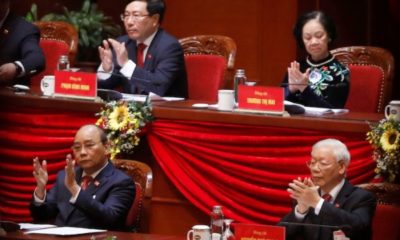
 Politics & Economy4 years ago
Politics & Economy4 years agoVietnam’s unresolved leadership question
-
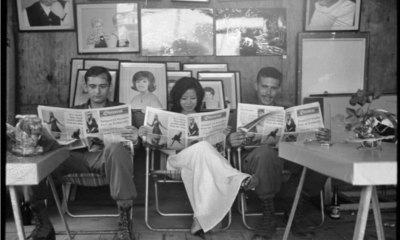
 Politics & Economy2 years ago
Politics & Economy2 years agoRethinking History and News Media in South Vietnam
-
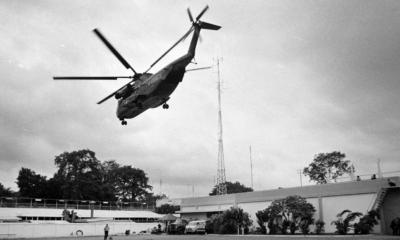
 After 19751 year ago
After 19751 year ago“The Vietnam War Was an Unwinnable War”: On Factuality and Orthodoxy
-

 Society & Culture5 years ago
Society & Culture5 years agoPandemics and Morality: Lessons from Hanoi
-
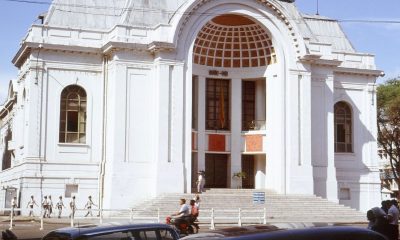
 ARCHIVES5 years ago
ARCHIVES5 years agoDemocracy in action: The 1970 Senatorial elections in the Republic of Vietnam (Part 1)
-
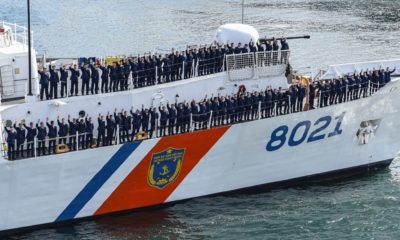
 Politics & Economy4 years ago
Politics & Economy4 years agoThe Limit to U.S.-Vietnam Security Cooperation
-
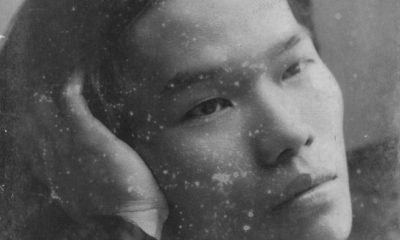
 Politics & Economy5 years ago
Politics & Economy5 years agoNational Shame: How We (Americans) can learn from Nguyễn An Ninh
-
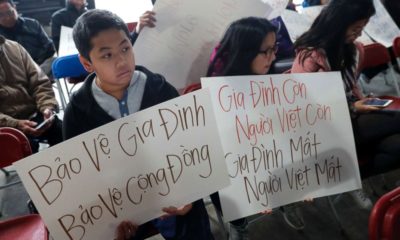
 Vietnamese-America4 years ago
Vietnamese-America4 years agoDeporting Vietnamese Refugees: Politics and Policy from Bush to Biden (Part 1)


